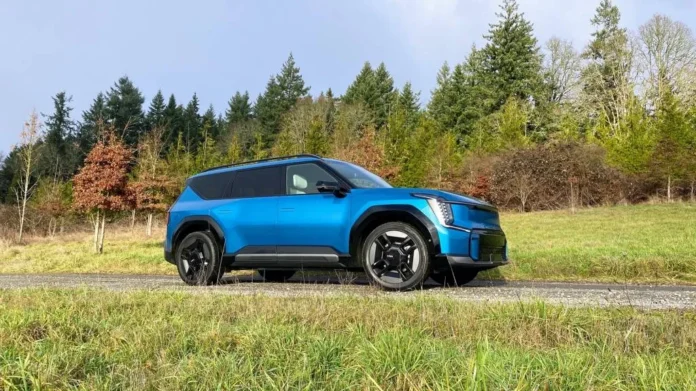It’s crucial to add more tools such as Hydronic Shell’s tech to the building-decarbonization toolbox, Rodriguez noted. Buildings account for about a third of the nation’s annual carbon emissions, according to the U.S. Department of Energy, and space heating is the biggest source of onsite climate pollution.
While Hydronic Shell’s innovation isn’t for every large building — it’s not suited for structures with complex geometries, large windows, or historic facades that owners don’t want covered up — it could apply to virtually any edifice with regular cutout windows, including schools, hospitals, and offices.
For now, the startup is focused on multifamily buildings, a class bound to keep it busy. About 11 million multifamily units in the U.S. require major envelope and HVAC upgrades in order to achieve net-zero emissions, Goldstein said. Of those, he estimated that Hydronic Shell’s tech could be applied to 3 to 5 million units.
Look at the inside of one of the panels designed by Hydronic Shell, and you’ll find about 6 inches of rigid insulation around an upgraded window, the copper piping of the hydronic system, and galvanized steel ducts for carrying fresh, filtered, and pre-warmed or -cooled air from air-handling units on the roof.
You’ll also see that the pipes and ducts run to an electrically powered metal box with a top grate that sits below the windowsill. In the box, water heated in the winter or chilled in the summer by the building’s central heat pumps runs through a copper coil. A whisper-quiet fan blows over the coil to deliver warmed or cooled air to the adjacent indoor space.
While the other HVAC components in its design are off-the-shelf, Hydronic Shell invented this delivery unit, called the Hydrobox. Because it’s built-in, contractors don’t need to install an equivalent on a tenant’s wall. They only need to remove the original window to allow air to freely flow from the new HVAC system and do a little finishing work, Goldstein said.
Hydronic Shell’s tech provides potential decarbonization benefits beyond the building it’s installed on. The system could connect to a thermal energy network that allows buildings to share heat, reducing demand on the power grid so that electrification can go faster, Rodriguez pointed out. That interconnectedness just isn’t possible when you’re installing individual window heat pumps, he said.
First building to get a hydronic shell
Hydronic Shell will soon put its innovation to the test in its first demonstration project in Syracuse, New York. Last year, the company won a $3 million grant through the national Housing Affordability Breakthrough Challenge to retrofit 418 Fabius St., a seven-story affordable-housing building owned by the Syracuse Housing Authority.
As a three-person technology company, Hydronic Shell doesn’t make its own panels or install them itself. Rather, the startup is partnering with manufacturers and contractors to deploy its solution. Currently, the company is working with the global HVAC company Trox to make the Hydrobox and three manufacturers to fabricate panels: FacadesX, Wythe Windows, and global company Tremco Construction Products Group.
For the Syracuse project, Hydronic Shell is teaming up with Cycle Retrotech, a multifamily housing-retrofit provider, to manage swapping the building’s gas boiler for Hydronic Shell’s heat-pump-based system. Electrification startup BlocPower is helping with community engagement.
In addition to beautifying the edifice and improving indoor air quality for residents, Hydronic Shell’s tech will make the building better sealed and insulated. That means smaller, less costly heat pumps can be installed and run at lower, more efficient temperatures. Taitem Engineering, the engineering firm on the project, found that the system will slash the amount of energy the structure needs for heating by a staggering 95 percent, Goldstein said — an outcome he anticipates will drive utility bills “way down.”
Goldstein expects construction on the project to start in fall 2025 and wrap up within nine months. He declined to give an estimate of the project’s total cost but said it would be half that of a conventional retrofit with a new facade and HVAC system. He anticipates that installation costs will fall further as Hydronic Shell and its partners eventually deploy the system on more structures. Through the New York tech prize, which introduced finalists to real estate owners, Goldstein said the startup is lining up additional projects.
Rodriguez of Emergent Urban Concepts told me that the startup’s tech is ideal for getting fossil fuels out of mid- and high-rise, mid-century, non-historic edifices. He’s eager to see the demonstration project completed. Once Hydronic Shell’s tech is proved out, he said, “I think it’s going to be really successful.”

Source link by Canary Media
Author Alison F. Takemura
#startup #aims #decarbonize #big #buildings #hassling #tenants







